In 2017, the UK Textile Study Group ran an exhibition called Dis/rupt. For this exhibition, Jean Draper made the installation ‘Forbidden’. This was a work depicting the destruction of one culture by another, stronger one. For the project, she explored the challenging subject of book burning and what it represents.
Jean Draper is a member of the 62 Group of Textile Artists and the UK Textile Study Group and has exhibited widely with both groups. Textile Study Group members are known for their innovative and challenging approaches. Her work is in public and private collections around the world and she has taught in the UK and abroad.
Jean is a previous National Chairman of the UK Embroiderers’ Guild. She has written two books, [easyazon_link identifier=”1849941211″ locale=”UK” tag=”wwwtextileart-21″]Stitch and Structure (Batsford 2013) and [easyazon_link identifier=”1849944393″ locale=”UK” tag=”wwwtextileart-21″]Stitch and Pattern (Batsford 2018).
In this article, read about how Jean created her work ‘Forbidden’. She shares how her work stems from long periods of research into a subject, which may include visits, drawing, photography and extensive sampling.
Jean is intrigued by barren landscapes in the UK, South West America and Western Australia, which although may first appear harsh and empty, contain bold, sculptural features. She tries to emulate this by treating her stitched textile work with clay and paint. She also uses sandpaper and burning to create the appearance of erosion and deterioration.
Learn about the extremes she went to and how she had to overcome her pure distaste for burning books in order to complete the installation.
Name of piece: Forbidden
Year of piece: 2017
Techniques and materials used: Books of different sizes and proportions, coarse threads, torn rags, smooth wire, barbed wire, chains, padlocks, various nails and screws, paint and ashes
Size of piece: 2m x 1m
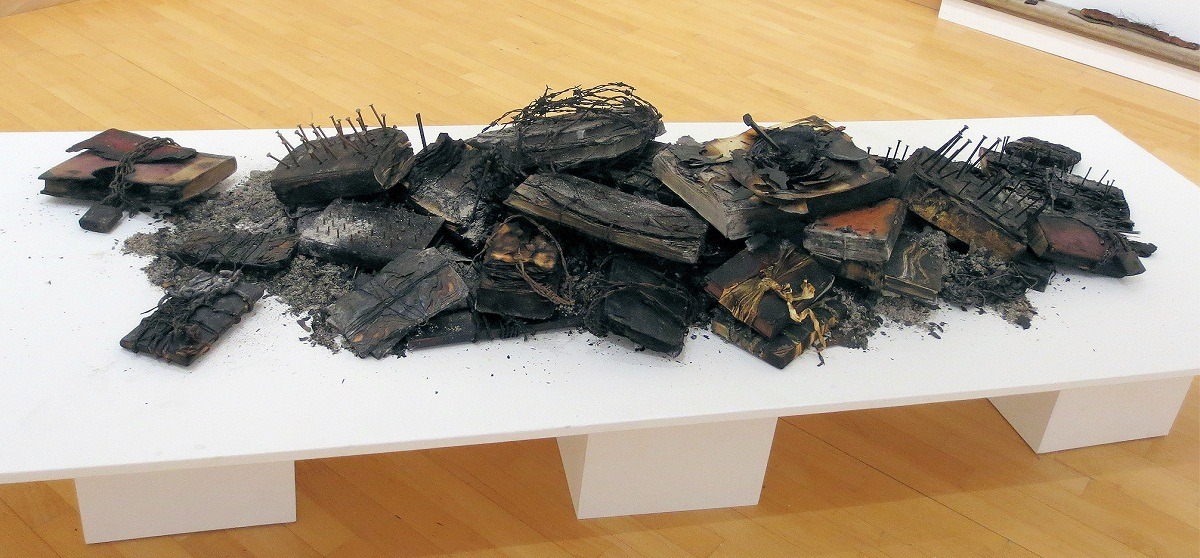
The impact of natural disasters
TextileArtist.org: How did the idea for the piece come about? What was your inspiration?
Jean Draper: Several years ago I witnessed the immediate aftermath of a huge and devastating forest fire in Arizona while travelling on the re-opened road, several days after the fire.
Today I still think of this experience and continue to make work about it, combining it with other landscape-related subject matter. After years of reflection on this experience, the format of my work relating to the wildfire has changed and developed over the intervening period of time.
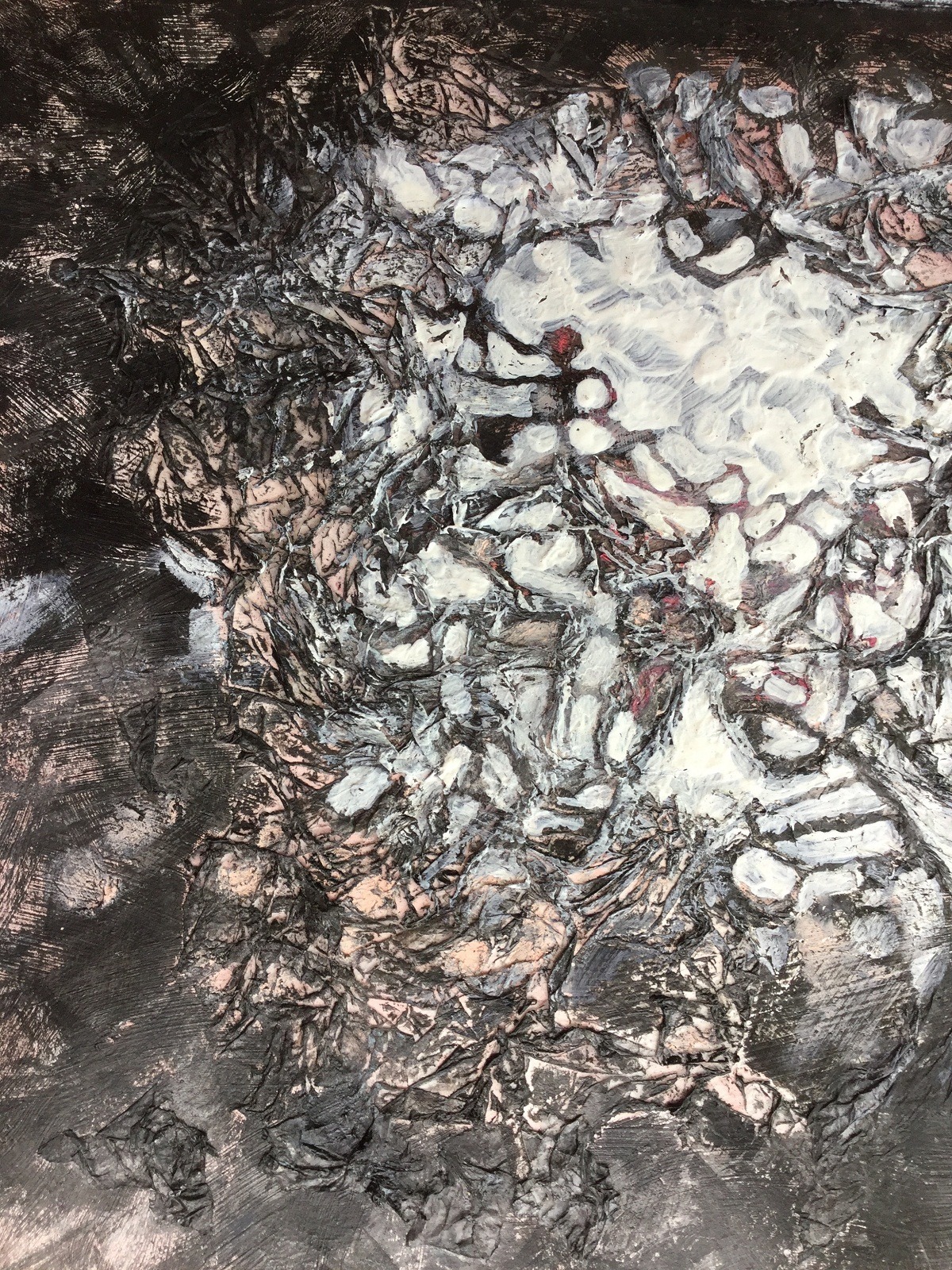
What research did you do before you started to make?
Immediately after experiencing the devastation of this fire, I realised it had made a strong impact on me and I began my research. In keeping with my usual process, most of my research was based in drawing and notes.
I spent time recording information and my reactions to the event. I made drawings in various media of whole areas and of details such as the grotesque shapes of some of the remaining deciduous trees. I made emotional, expressive drawings, too.
I filled a whole sketchbook with ideas for work on this subject!

The barbaric burning of books
Was there any other preparatory work?
I completed an interim series while working on this project, which was called ‘Burned Books’. Small book sculptures were used to express the loss of books that could have been made from all the many thousands of wasted trees as a result of the wildfire.
Some pieces were made from old paperbacks, others were constructed from handmade paper and stitched together. All were burned.
In order to connect these pieces with that particular landscape and place, I put blackened thorns and spikes on them to emulate some of the remaining shapes and details that I had observed.
The generic title I gave to this series was ‘Books Can Be Dangerous’, initially because they were too spiky to open. This led me to think about how ideas and principles expressed in books can be considered unacceptable and even dangerous by some ideologies. Books may even be suppressed or censored. I began to read about such instances throughout history, as part of my research for my work ‘Forbidden’.
‘Forbidden’ was an installation made in 2017 as a culmination of this lengthy research. The work was created in response to a challenging title, ‘Conflict’, set by the Textile Study Group, as part of an exhibition entitled ‘Dis/rupt’. We were encouraged to make work that disrupted our normal practice.
I am saddened by the power struggles, lack of understanding, the fear and the prejudice that is demonstrated in all levels of society; between nations, governments, political parties, ideological and religious factions, neighbourhoods and individuals. These attitudes prevent peaceful coexistence and can actively promote conflict.
Cultural symbols such as art, architecture, religious icons, language and books are important. Throughout history, there have been many instances where, in order to crush or subjugate others, cultural symbols of the weaker culture have been destroyed or banned.
For me, burning books exemplifies barbaric acts such as these and inspired the title of my work ‘Forbidden’.
In this installation, I explored the sculptural potential of the altered book form. More than just the physical appearance, I investigated the emotional aspects for myself and the viewer, of making and presenting a collection of books that are partially destroyed through the aggressive act of burning.
I found it very painful to destroy even old paperback books. In making this installation I had to overcome my utter distaste for the brutal destruction of the books because of the importance of the meaning of the work.
Books contain information meant to disseminate knowledge and are important to society. I hope that the idea of destroying books, making them unreadable, is a powerful one.
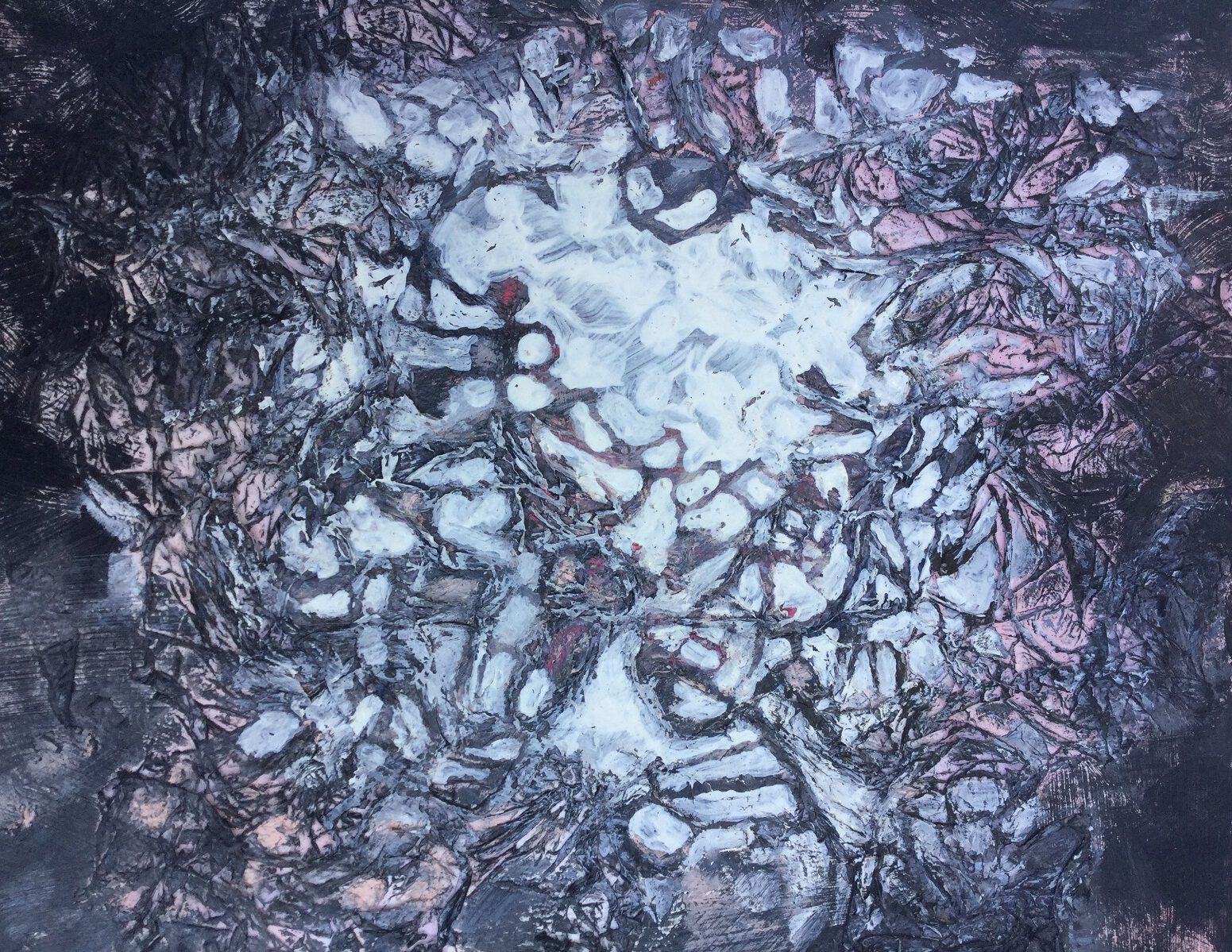
What materials were used in the creation of the piece? How did you select them? Where did you source them?
For this piece I used ready-made books of different sizes and proportions. Many were surplus books donated by friends.
In addition I used coarse threads, torn rags, smooth wire, barbed wire, chains, padlocks, various nails and screws, paint and ashes to create the work. These were sourced from my own collection, from charity shops and DIY stores.
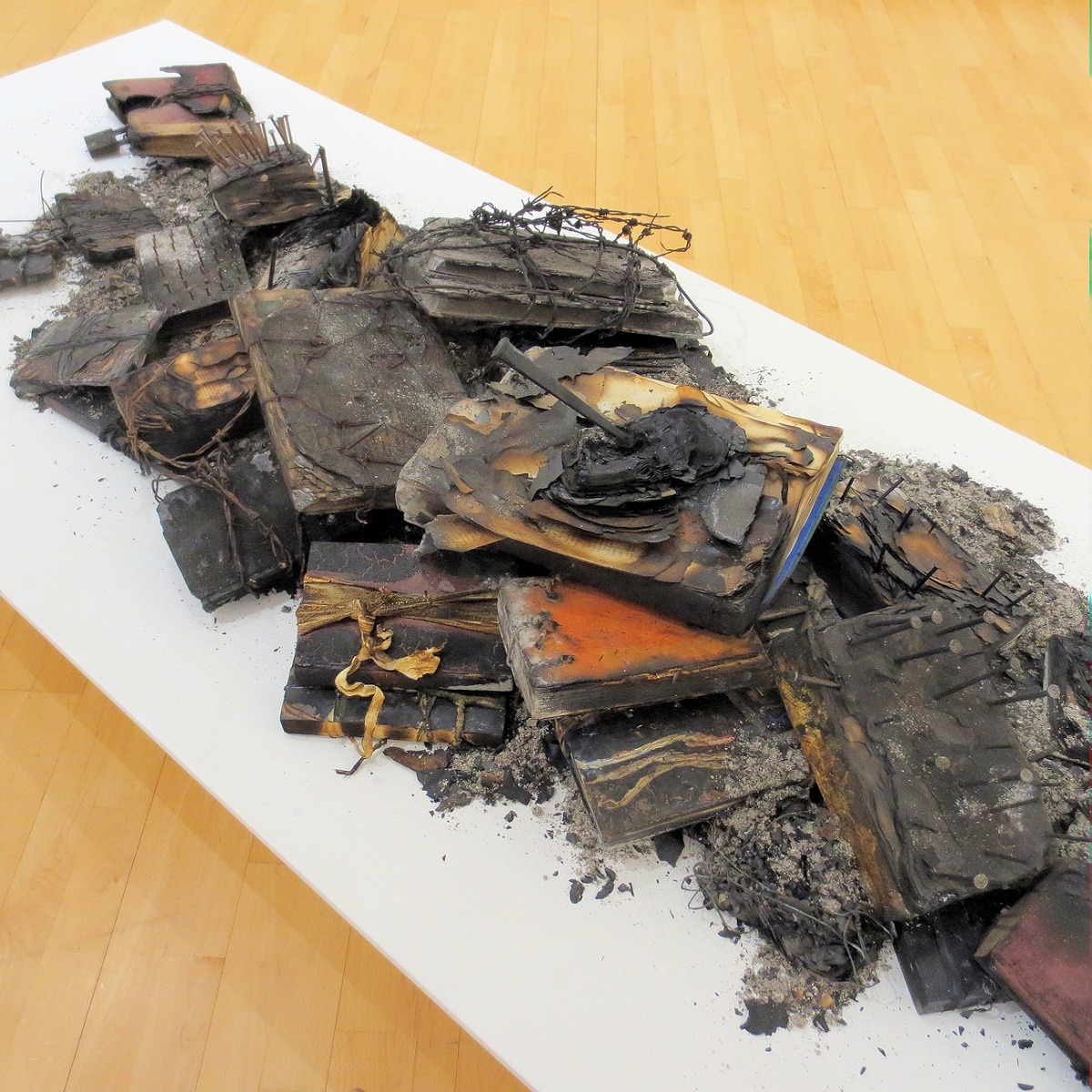
What equipment did you use in the creation of the piece and how was it used?
I used a drill and other tools such as a screwdriver, hammer, wire cutters, a blow-torch and my garden rubbish burner. When you look at the work you can see how I used these tools to damage and destroy the books.
For example, the drill was used to make holes in the books to enable me to close them up and ‘gag’ them with stitching, using coarse thread and sturdy needles.
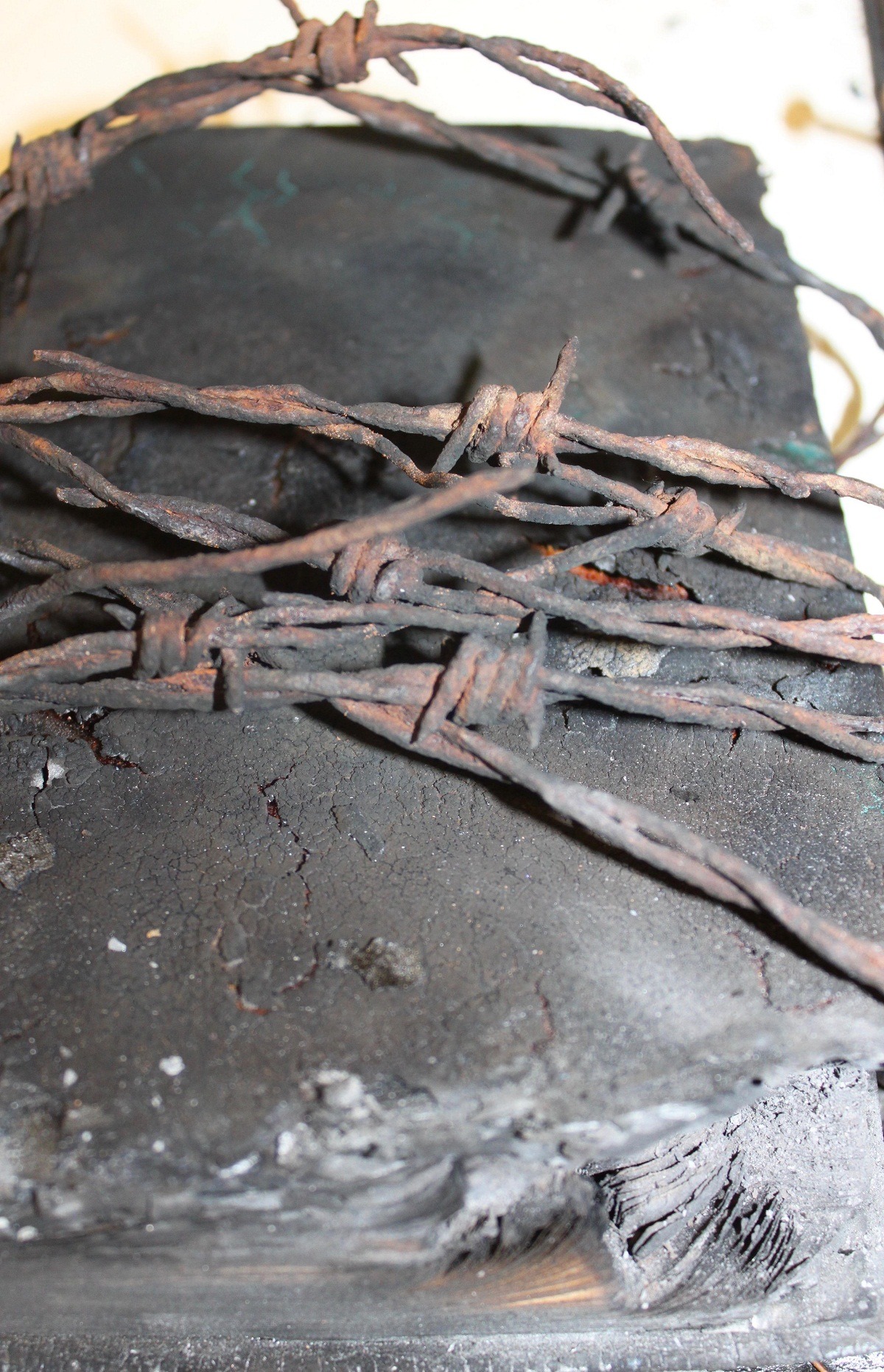
Destroying books to create art: the process
Take us through the creation of the piece stage by stage
The whole process of making ‘Forbidden’ was an experimental one.
The books had to retain some of their shape but show the forces that had been put upon them. The burning had to be genuine but I did not know how far I could take this before they completely disintegrated. Some books were lost completely.
My main material was paper, widely classed as fibre, and I used wrapping, rags and some rudimentary stitching. The question came to mind as to whether ‘Forbidden’ and the processes used to make it, were acceptable in the context of an exhibition of textiles. I have long held the view that textiles do not necessarily need to be pretty. Textile art can be as expressive an art form as we wish and there is a long history of textiles made for use in various protest movements.
I was distressed. I had to overcome my hatred of the brutal destruction I had to carry out. I had to constantly remind myself that I was attempting, ultimately, to create art work. In order to communicate my message, the work had to be hard, powerful, even shocking. Any qualms I had were secondary to the meaning of the work.
First, the titles of all the books were obliterated with paint. I felt it important that they needed to be anonymous, universal and devoid of any recognisable language or religious connections.
Each book was then closed up in some way using rough, aggressive methods. This included wrapping and tying with heavy threads and torn rags, stitching through the whole book, binding with barbed wire, fastening with chains and locks, or hammering nails through all the pages.
I had studio help to burn each book individually in my garden, using a blow-torch. Water was at hand to douse the fire at the critical moment, then the books were left outside to dry – a surprisingly lengthy process in all!
Afterwards, each book was carefully treated with an invisible sealant to help prevent further disintegration. I gave instructions that any fragments and parts that fell off were to be added to the ashes scattered below and amongst the books on the exhibition plinth.
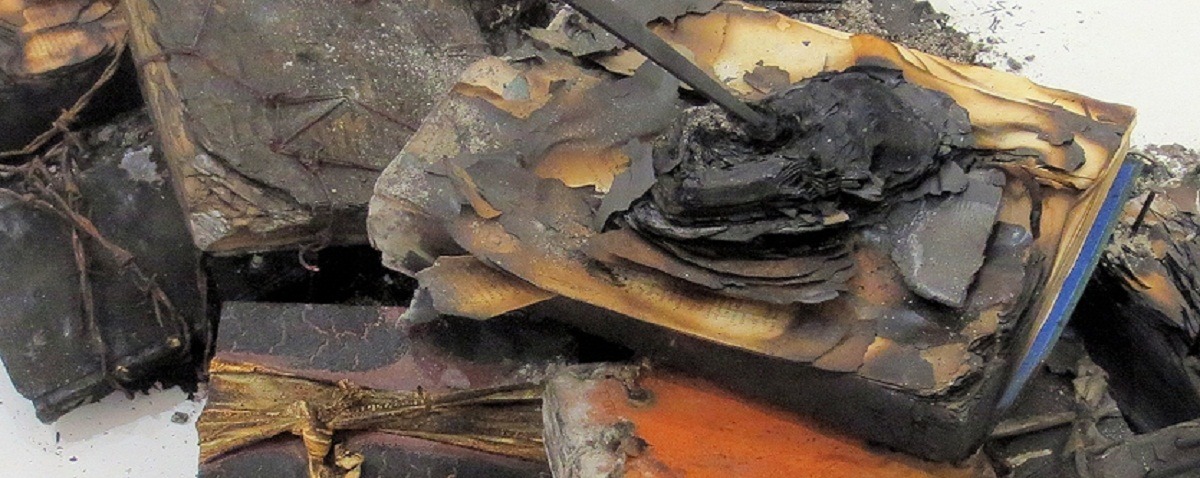
What journey has the piece been on since its creation?
Over the past sixteen months ‘Forbidden’, within the Dis/rupt exhibition, has toured four different galleries in England, Wales and Scotland.
For more information visit textilestudygroup.co.uk
Do you find this work moving, expressive or shocking? Share it with your friends using the buttons below
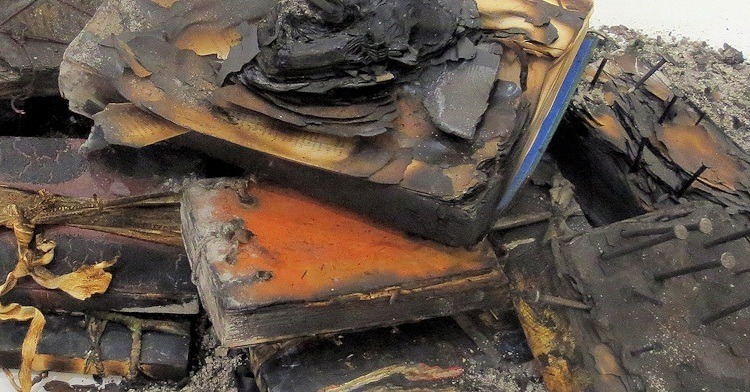

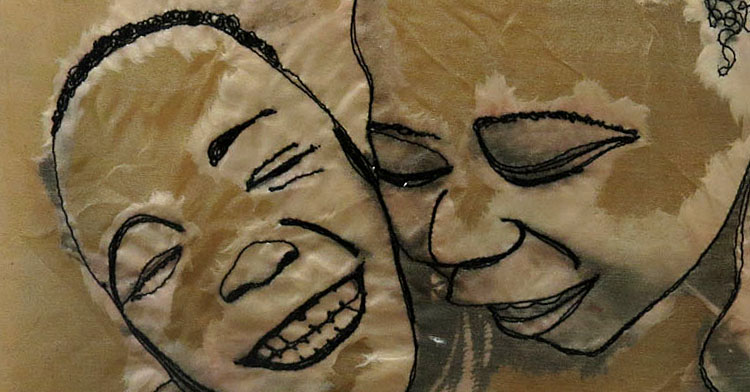
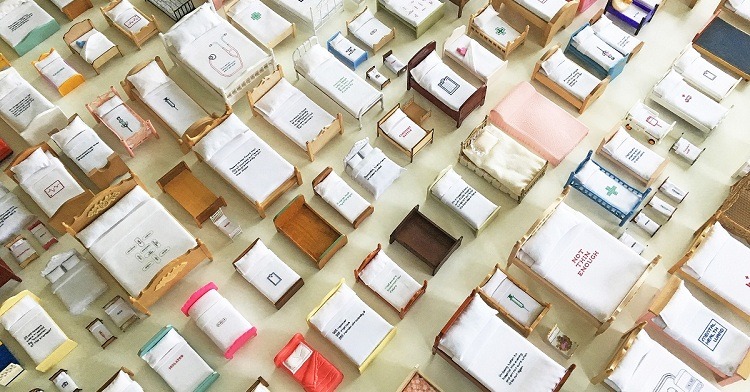
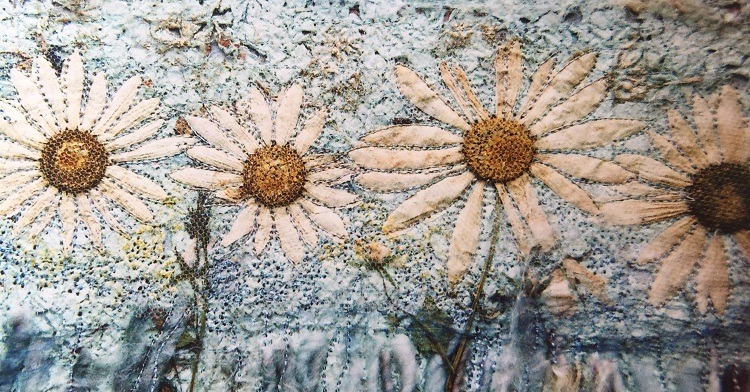
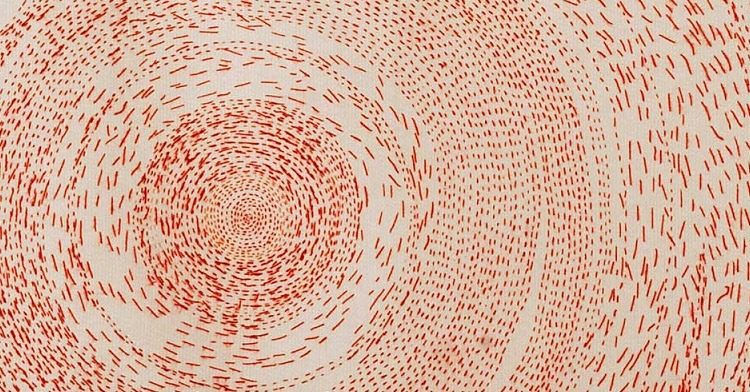
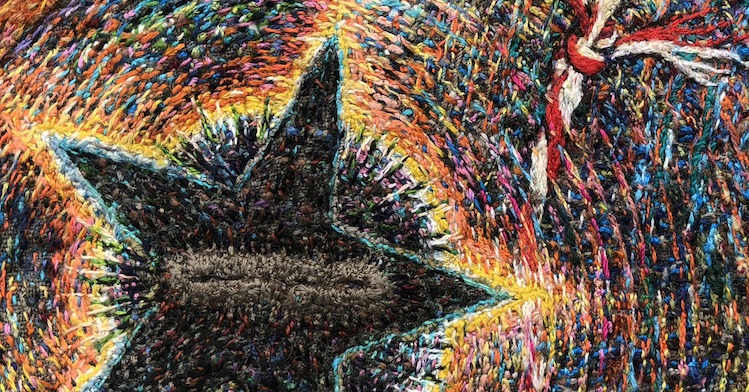
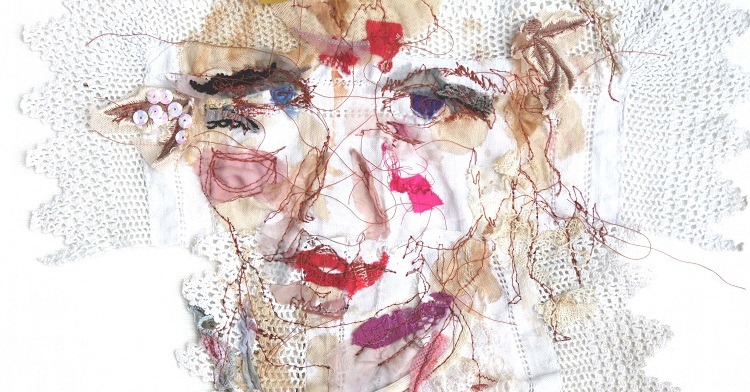
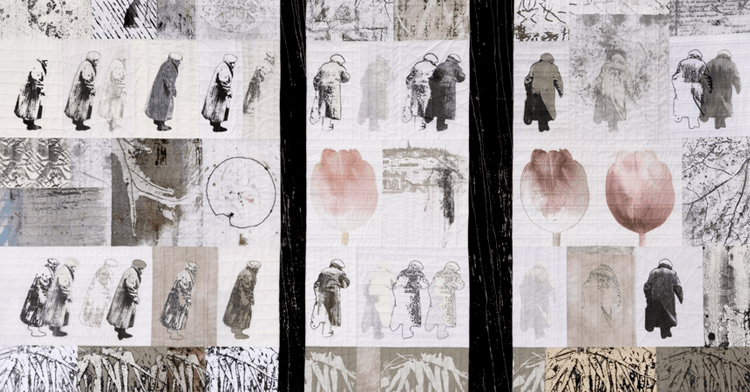
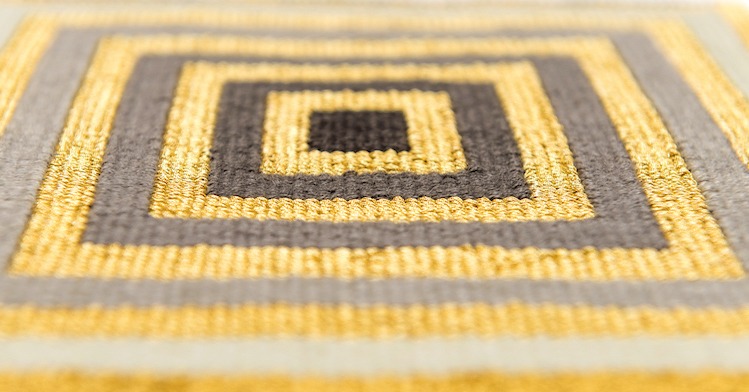
7 comments
r
as i started to look this piece i wanted to say its pointless and trivial, but it not! as i read and looked carefully at the installations, they become more and more powerful and thought provoking on so many levels. i can recycle a book but i could never burn one. there was a craze for hollowing out old books and turning them into small-scale scenes… i could not treat a book like that either. i hope many more people see this work and consider what they are saying.
Jill Hayfield
I am a former student of Jean Draper in the late 1960’s
I would like to send her a Christmas card
May I have her postal address please?
charlotte
Hi Jill,
Unfortunately we are unable to share artists personal details, however, you can find an email for Jean the textile Study Group Website, so you can contact Jean this way yourself: https://textilestudygroup.co.uk/members/jean-draper/
I hope that helps and you have a wonderful Christmas.
Very best wishes,
Charlotte
Yvonne
Fascinating inspiration on creating beauty from destruction. The images are truly moving for anybody who reveres books. My compliments to Jean Draper ; the abstracts from burnt trees and dust with pastels and paints …all the depictions ….are really beautiful art evolving from waste!
Debbie
I have seen this piece of work and I found it very distressing and moving. It brought to mind the burning of religious books that has happened throughout history but mainly my interpretation centred on the destruction of Jewish books by the Nazi’s and recently the libraries of Mosul.
nina lee-Shears
I have not yet read the book. However, the implications and directives shown in the images establishes truths about not just the past but currently, as born in the aftermath of wars and uprisings throughout the globe. Being able to recreate scenes of violence via textile imagery and contemporary embroideries is truly compelling and long lasting, as we see by viewing the Bayeux Tapestry (Embroidery), the Overlord Tapestry and the large embroideries done by Alice Kettle, now hanging in Metropolitan Museum, Manchester.
My only other comment is that from such devastation and cruelties often comes pictures of great beauty. (See the painting of “The Jewess” by Jean Fautrier, French painter on the wanted list by the Gestapo)
Margie
Oh my – this is indeed powerful work! I love it, though I understand her feelings on book burning. A well depicted piece of history.